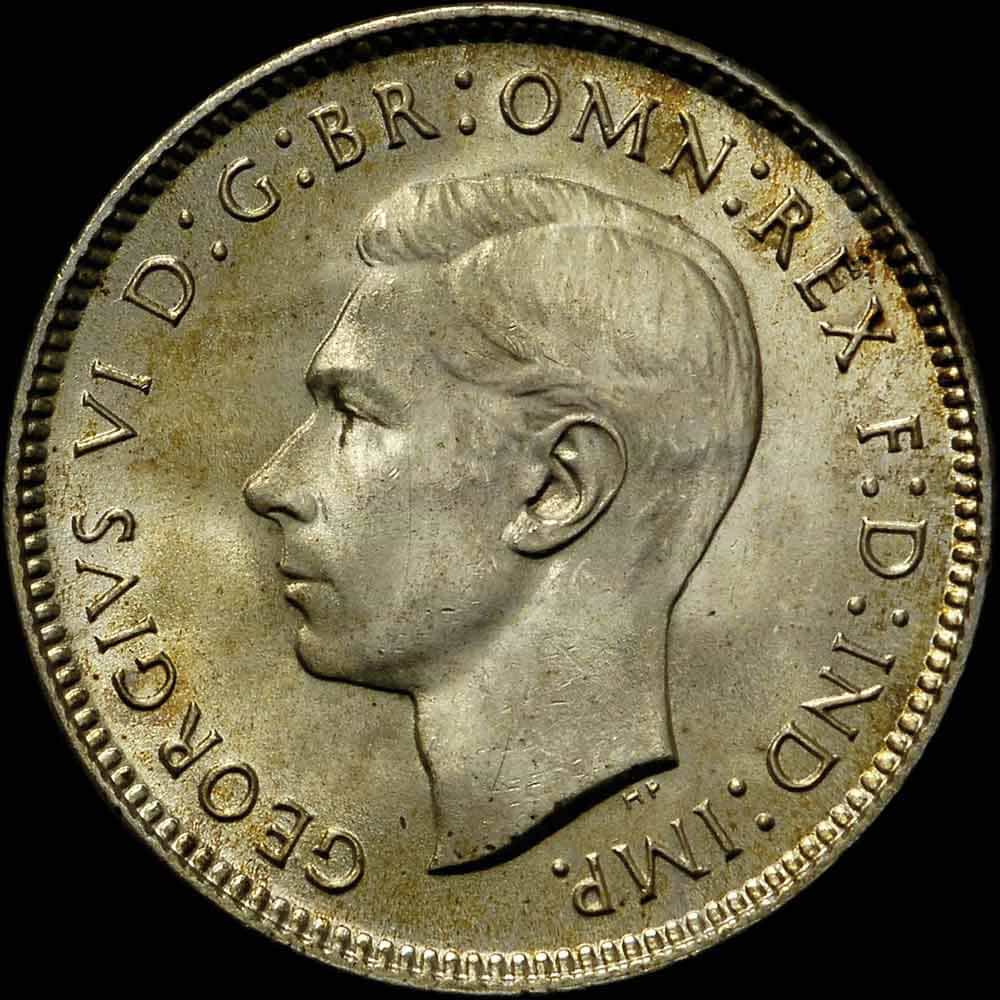Australia 1942 D Sixpence
| Mint: | Denver | Mintage: | 12,000,000 | Milling: | Reeded |
| Weight: | 2.83 grams | Diameter: | 19 mm | Composition: | 92.5% Silver, 7.5% Copper |
|
Click to enlarge
Wear
Next
Prev

Obverse 3 - English
|
Click to enlarge
Wear
Next
Prev

Reverse B - London
|
||||||||||||||||||||||||||||||||||||||||||||||||||||||||||||||||||||||||
|
|
||||||||||||||||||||||||||||||||||||||||||||||||||||||||||||||||||||||||
| Click on Wear to show high points first susceptible to wear | |||||||||||||||||||||||||||||||||||||||||||||||||||||||||||||||||||||||||
Value
|
BM
Ad
NP
|
8
Good
VG10
|
10
VG
F12
|
12
about F
F15
|
15
Fine
VF20
|
20
good F
VF25
|
25
about VF
VF30
|
30
Very Fine
VF35
|
35
good VF
EF40
|
40
about EF
EF45
|
45
Ext Fine
AU50
|
50
good EF
AU53
|
53
about Unc
AU55
|
58+
virt Unc
AU58
|
58-60
Uncirc
MS60
|
58-61
Uncirc
MS61
|
58-62
Uncirc
MS62
|
63-64
Choice Unc
MS63
|
64-65
near Gem
MS64
|
65-66
Gem
MS65
|
66-67
Gem
MS66
|
67-68
Gem
MS67
|
68
near Flaw
MS68
|
69
virt Flaw
MS69
|
70
Flawless
MS70
|
Proof
|
|---|---|---|---|---|---|---|---|---|---|---|---|---|---|---|---|---|---|---|---|---|---|---|---|---|---|
|
BV
+
NGC
PCGS
|
BV
+
NGC
PCGS
|
BV
+
NGC
PCGS
|
BV
+
NGC
PCGS
|
BV
+
NGC
PCGS
|
BV
+
NGC
PCGS
|
BV
+
NGC
PCGS
|
BV
+
NGC
PCGS
|
BV
+
NGC
PCGS
|
$3
+
NGC
PCGS
1
|
$5
+
NGC
PCGS
|
$10
+
NGC
1
PCGS
3
|
$20
+
NGC
4
PCGS
13
|
$30
+
NGC
PCGS
|
$40
+
NGC
PCGS
1
|
$60
+
NGC
9
PCGS
25
|
$100
+
NGC
16
PCGS
28
|
$150
+
NGC
23
PCGS
47
3
|
$225
+
NGC
6
PCGS
24
1
|
$500
+
NGC
1
PCGS
1
|
$900
+
NGC
PCGS
|
$1350
+
NGC
PCGS
|
-
+
NGC
PCGS
|
-
+
NGC
PCGS
|
N
|
BM
Benchmark
Ad
Adjectival
NP
NGC/PCGS
Collectable grades
Does not exist by definition
Investment grades
-
Unlikely to exist
Aspirational grades
BV
Bullion or metal value
Not known in these grades
''
Value as above
Proof
Y (Yes)
N (Not known)
N (Not known)
Last updated July 2024
Notes:
A recent study of a contemporaneous hoard of around 2,000 1942 D Sixpences has revealed at least three distinct placements of the 'D' Mint Mark. The gap between the Mint Mark and the base of the ribbon on the majority of coins is about three quarters of a millimetre, but on smaller numbers of coins this gap can be as close as half a millimetre or as wide as one millimetre. Although it is a small difference it is observable to the naked eye, and is a point of difference between the different master dies that were employed to strike the overall mintage of 12,0000,000 coins.
